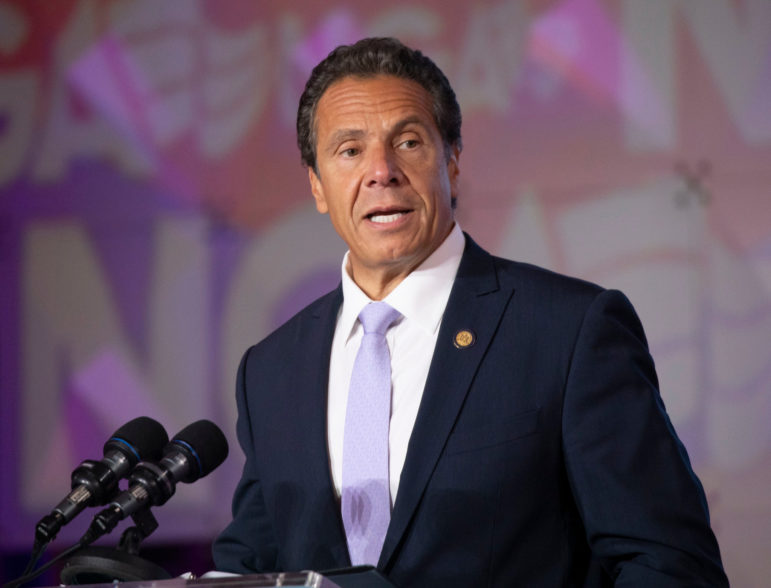‘With enough popular momentum, politicians and offices will change their positioning based on constituent demands. It is contemptible to call these feedback loops a mob or a witch hunt. On the contrary, they are demonstrations of democracy at work.’

Office of the Governor
Former Gov. Andrew CuomoLast week, an Albany court judge announced that criminal charges against Gov. Andrew Cuomo would be dropped. In response to the decision, Cuomo’s lawyer, Rita Glavin, said: “Today, reason and the rule of law prevailed. Not politics, rhetoric or mob mentality.” She insinuates that the governor’s resignation in August 2021 happened because of vindictive politics.
The irony here is that Gov. Cuomo resigned because of an official investigation carried out by his own attorney general’s office. That recourse happened through the realm of politics and media and not in the courts, and is a greater reflection of the law’s inadequacies in prosecuting sexual misconduct than it is an indictment of politics.
Cuomo’s resignation from office showed that politics was working exactly as it was supposed to, and exactly as citizens in a democracy should hope that it would. In response to public outcry, the media and political figures investigated alleged wrongdoing, presented the findings publicly and shifted their stances based on the information. Cuomo’s resignation shows that accountability is not dead. In fact, it might be our only hope for social change.
A little over a year before Cuomo resigned from office, he seemed invincible. In March 2020, COVID-19 had just landed on American soil and New York was the hotbed. In the absence of clear leadership from President Donald Trump, many people were desperate for guidance and hope from an authority figure. Cuomo filled the void. He held daily press conferences that were soon picked up not only by the New York state press, but by national outlets, and 87 percent of New Yorkers approved of his management of the pandemic. He was the COVID-19 savior, the object of all “Cuomosexual” desires. He seemed invincible. A king atop his throne.
Beginning in early spring, however, Cuomo the Shakespearian hero had the first foreshadow of his fall. Phones were ringing off the hook at the New York Attorney General’s office with constituents saying that their relatives were dying in nursing homes of COVID-19 because of a Cuomo administration decision to keep them out of the hospital. The media began reporting on the story and questioned Cuomo’s leadership and decision-making. This story allowed the press to complicate its narrative about the Cuomo administration’s handling of the pandemic and present an alternative frame to the one that his office was pushing.
The ballooning media coverage of nursing home deaths and pressure from constituents caused the attorney general to open an investigation on the subject. It was this report, released in January 2021, that caused the first significant decrease in Cuomo’s approval ratings.
 CityViews are readers’ opinions, not those of City Limits. Add your voice today!
CityViews are readers’ opinions, not those of City Limits. Add your voice today!
The report emboldened other New York politicians to condemn the Governor’s decision. In response, he launched into a tirade, most notably against Ron Kim, an Assembly member from Queens. Soon, others were coming forward with stories about how they suffered sexual harassment and abuse at the hands of the governor. When this coverage reached a fever pitch, the attorney general launched another investigation. The findings, which came out one week before Cuomo’s resignation, led to a 14 point dip in his approval ratings, down to 38 percent. At this point, prominent New York Democrats, like Senators Chuck Schumer and Kirsten Gillibrand, turned on Cuomo. His hold on power had crumbled.
Political scientist John Zaller has written that a politician’s agenda-setting power over the media is the basis for changes in mass opinion. The more a politician is able to get their exact perspective conveyed in the press, the more likely their agenda will translate into public opinion. If there are challenges to that perspective, however, that disagreement plays out in the public sphere. People then have the ability to weigh the differences and make a determination about which perspective most resonates with them.
The biggest moments for shifts in public opinion against Cuomo were around the release of the two attorney general investigations into his administration. Though there was near constant coverage of the Cuomo administration, its handling of the pandemic, and Cuomo’s various scandals, it is noteworthy that the biggest dips in public opinion happened when another political elite changed their stance. But these actions did not happen in a vacuum. The attorney general only carried out investigations following press coverage and constituent complaints.
Examples of politics working as it should are few and far between. More often than not, we see stories of gridlock, of politicians responding more to the whims of their donors than to the will of the people. We decry the slowness, the incompetence, the meaninglessness of popular engagement. Cuomo’s resignation shows hope that feedback loops between politicians and their constituents, often conveyed through media, can shift political priorities. That with enough popular momentum, politicians and offices will change their positioning based on constituent demands. It is contemptible to call these feedback loops a mob or a witch hunt. On the contrary, they are demonstrations of democracy at work.
Lia Weintraub is a political strategist and writer based in Brooklyn, New York.









One thought on “Opinion: Andrew Cuomo’s Resignation Shows Democracy in Action”
Stupid opinion piece. When 3.7 million voters are asking why did the NYS AG did not do her job, your pice makes no sense. The politicans are covering their butts. They have no idea what NYers want. The Media is untrustworthy.
This does not help women, it hurts them.